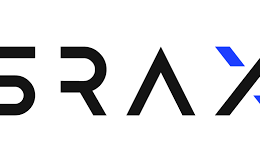Smart innovation key to business success
Smart business leaders know that there is an important distinction between risk taking and intelligent risk taking. It is the former that may make the headlines, but it is the latter that often leads to the greatest rewards.
There is an increasing awareness within the business community of the world of difference between innovation and smart innovation … and, in many cases, between innovation and progress. And it’s a good thing that these distinctions are becoming clear, as knowing the difference may very well separate winners from losers in the 21st Century.
Too often, people make the mistake of assuming that innovation automatically translates into progress, but that is not always the case. Innovation often causes disruption, and not all innovation provides true value to either the customer or the organization. Some innovation can cost employees jobs while others may come with significant upfront costs for the employer – costs that are difficult to recoup if the innovation doesn’t light up the pinball machine as intended. Restaurants who innovate too much may lose long-standing customers who love the comfort that the establishment provides, and poorly-focused innovation for an enduring product may damage that company’s brand (remember “New Coke?”).
The best kind of innovation is one that addresses a need, solves a problem that matters, and serves as a catalyst for growth. A recent article in the Harvard Business Review said that leaders hoping to boost their ability to drive growth through innovation need to simultaneously “direct it strategically, pursue it rigorously, resource it intensively, monitor it methodically, and nurture it carefully.” Those five truths provide solid footing for any company committed to the task.
Here are three other touchstones to consider:
•A 2013 study by Deloitte Touche Tohmatsu Limited reported that just one quarter of millennial employees believe that business leaders are doing enough to encourage practices that foster the development of new ideas. This number should be of concern. Companies can combat this statistic by challenging all employees throughout the organization to play an important role in the drive for smart innovation. Often times the frontline employees, not those in the C-suite, are the ones who hear what customers are saying and their input in the process allows the staff to take ownership, helps drive better value, and help ensure a successful outcome. Doing so requires creating an environment where employees have the opportunity to interact and exchange ideas in an unstructured setting in the coffee room, at company sponsored social events, during lunch breaks, etc. It means investing in training and encouraging employees to attend conferences and seminars where new ideas from outside of the industry could trigger great ideas for inside the industry. It also means making sure that all employees, whether they are in the field or sitting behind a desk, have the opportunity to hear customer feedback as that is a great source of idea generation. You never know where you might find a new Rembrandt so don’t take the brushes away.
•Focus on innovation that provides true value to the customer. Doing so can give an organization the kind of competitive advantage that results in top-line growth and bottom-line results. Our company, for example, sits squarely at the intersection of healthcare and technology, two industries where innovation is central to success in the wake of the increased consumer demands and regulatory requirements being placed upon us. While no one individual or one company has a patent on innovation, it is the one vital quality that our industry must embrace if we are to continue to move the needle forward. The emergence of electronic medical records is one example where healthcare and technology have come together to create positive innovation in quality and efficiency. Such opportunities exist across all industries throughout corporate America. Find yours.
•Research conducted by Accenture revealed that more than 90 percent of executives believe long-term success depends on their ability to develop new ideas. But it is only when those ideas are turned into action that true innovation occurs. To take that critical step, employers need to be willing to dedicate the right resources to make it happen. Otherwise, executives may be calling it a waltz but they are merely shuffling their feet. Once done, companies need to continually assess what works and what doesn’t and then be flexible enough to adjust when necessary. Much of this comes down to company culture. Never underestimate the important role of organizational culture in enabling organizations to translate innovative activity into tangible performance improvements.
More than ever, business leaders need to pursue and embrace the kind of innovation that benefits the consumer, makes the system work more efficiently, and helps create a winning culture within the workplace. Some call it “the evolution of convenience, efficiency and effectiveness.” In short, smart innovation.
• Tom Peterson is president and chief executive officer at Westlake Village-based Clear Vision Information Systems.











